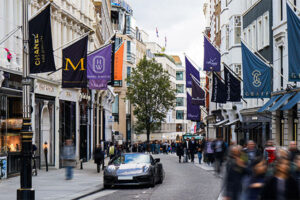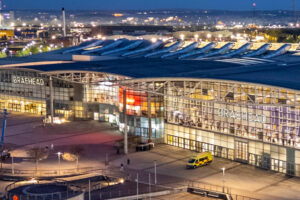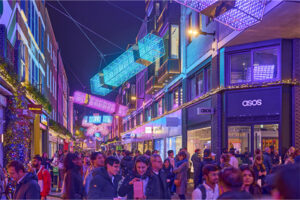BY JÖRG F. BITZER
At first glance, you would think that the online trade would be bad for “bricks & mortar” retailers, but it is actually just a new challenge. Retailers need to act quickly, but also deliberately and creatively. They must come up with innovative concepts in order to attract the attention of customers and profitably entertain them. The bricks-and-mortar trade’s advantages and strengths can be further supported with competent and friendly advice. Customers increasingly want to be “served” and attach great importance to the attention of the staff at the point of sale. One trend is to withdraw from department stores and focus on own stores. This allows not only increased presence, but also increased flexibility for retailers to act and react to trends.
Retailers are developing new sales channels, speaking to new target groups, and can react more quickly to trends. Spain’s Inditex Group, for example, has successfully implemented this strategy. Inditex now boasts eleven different brands and has expanded into other merchandise lines like home & living and sports. Zara Home has formed a separate target group with his concept, for example, and is expanding successfully. Another trend is to extend the offer in addition to the core business. Nespresso is known as a manufacturer of coffee machines, and especially for their coffee capsules. In order to increase sales, the retailer has opened its first coffee house in Vienna – with success. The mix of an opportunity to shop with a place to relax has won the Viennese over.
Growth via establishing an own-brand also leads to increased sales and offers retailers stability, since store label products can be positioned sustainably for price conscious customers. In the food sector in particular, own brands are very well received by customers and the high demand has even led retailers in some cases to delist branded goods. The strong growth throughout Europe of discounters like Aldi and Lidl is the best evidence that customers no longer attribute the same importance to brand names that they once did. The target group for these discount vendors today covers all customer segments, with both the middle class and the upper class today buying products there for their everyday needs.
Many once pure online merchants are now venturing into retail stores. The cereal manufacturer mymuesli now has 27 locations in Germany and Austria, very skillfully combining online and offline marketing. The online giant Zalando also uses omni-channeling to its advantage. The number of stores run by once pure online players is expected to rise from 100 today to 2,000 by the year 2020. The demand for pop-up locations is also not to be underestimated. The option of renting a shop for a short term has aroused considerable interest, not only with unknown merchants, but also with luxury vendors like Chanel and with mass market suppliers like Nike. New sales lines can be tested temporarily or stock can be sold in an innovative modern setting.
What is your opinion on this topic? Discuss it with us! Send your opinion to opinion@across-magazine.com !






